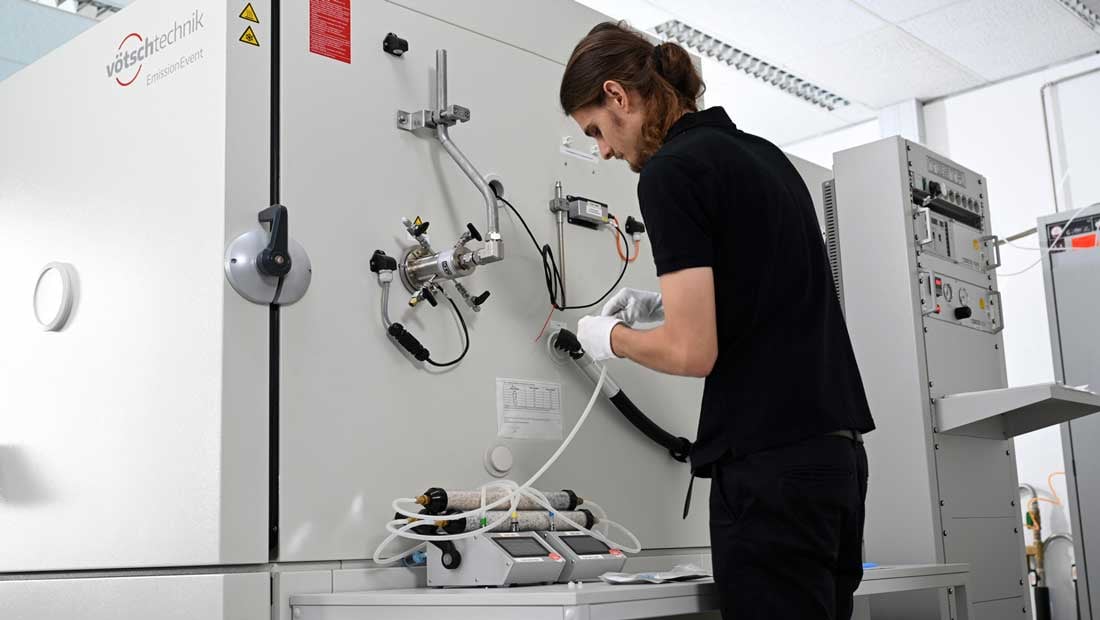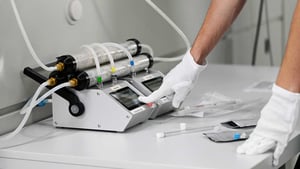WHY ARE THE UNITS OF THE MATERIAL EMISSION TEST RESULTS SO DIFFERENT?
The aim of testing the emission behavior of components and material samples is to obtain comparable characteristic values to assess their suitability for use in vehicle interiors, for example. Despite the uniform goal, however, there are several different methodological approaches to pursuing this goal. However, the different test methods often deliver their results in different units. Why is this the case?
- In analytical terms, testing for material emissions from a sample is usually the quantification of the absolute quantity (mass) of organic chemical substances in the measuring system after thermal desorption of the sample material. In some tests (e.g. VDA guideline 278), this is flushed directly into the measuring system, in others this is done via an intermediate step, such as collecting the emitted substances on a suitable matrix (e.g. adsorbent in emission chamber tests).
- In the next step, an attempt is made to generate a result that describes the sample itself well and is not subject to any dependencies of the measured value on random variables or selected decisions.
- In direct thermal desorption tests (e.g. VDA 278), the detected total emission of the sample is (more or less) directly dependent on the sample quantity used, which is why the primary measured value is standardized to the initial sample weight (emission mass [µg] / initial sample weight [g] → result [µg/g]).
- For emission chamber tests, it makes sense to refer to the volume of the analyzed air sample (emission mass [µg] / air volume [m³] → substance concentration [µg/m³]). The substance concentration obtained in this way corresponds exactly to the concentration value in the chamber. Although this is dependent on the air exchange rate in the chamber, this is very low and is intended to represent a model for the situation in the vehicle.

- In most cases, such standardizations (as shown in the two examples) are used. They are often standardizations to the sample quantity and then lead to resulting units such as µg/(m³ kg) (substance concentration per sample mass) or µg/(m³ m²) (substance concentration per sample area).
- In some cases, the total emission is also mentally distributed over the duration of the test and a time-averaged emission rate (µg/h) or an emission rate normalized to the sample quantity used (µg/(kg h) or µg/(m² h)) is calculated


